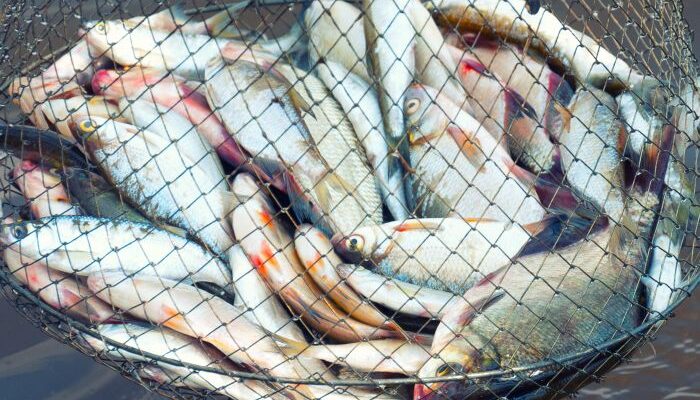Mangalore: Marine fishery scientists have highlighted the significant potential of the largely untapped mesopelagic resources within India’s Exclusive Economic Zone (EEZ). This discussion took place at a workshop on sustainable harvest and utilisation of mesopelagic fishes, organised by the Mangalore Regional Centre of ICAR-Central Marine Fisheries Research Institute (CMFRI) on Friday.
The mesopelagic zone, situated 200-1000 meters below sea level, is home to many small fish that are crucial to ecosystem dynamics. Despite being the most abundant vertebrates globally, mesopelagic fishes, including lantern fishes, remain largely unexploited.
Most of these fish are not consumed directly by humans due to their high lipid or wax ester content. However, marine scientists note that they are a rich source of protein, lipids, and minerals, making them valuable for the fishmeal industry, poultry and animal feed, and crop fertilisers.
You may also like to read – Biodiversity Day: CMFRI survey reveals rich diversity of marine species along the Kerala coast
Experts suggest conducting a pilot study to accurately estimate the potential yield of these fish and to assess factors such as economic viability for their sustainable utilisation.
Govt Support
At the workshop, Neetu Kumari Prasad, Joint Secretary at the Department of Fisheries, Government of India, pledged government support for entrepreneurial initiatives focused on the sustainable utilisation of mesopelagic resources. She said, “Government schemes provide options to develop mechanisms for utilising these fishes. Offshore resources are poorly explored. We should plan to extend fishing activities beyond territorial waters and tap into the resources within the EEZ.”
Dr. B. Meenakumari, former Chairperson of the National Biodiversity Authority, who inaugurated the workshop, emphasised the need for developing effective harvesting techniques to sustainably utilise this untapped potential. She highlighted the importance of creating suitable harvest methods, assessing the economics of fishing operations, developing post-harvest protocols, and evaluating the utilisation of by-products from mesopelagic fishes.
You may also like to read – CMFRI launches mobile app to encourage citizen science initiative in marine fisheries research
CMFRI Director Dr. A. Gopalakrishnan noted the significant economic opportunities these resources offer. He mentioned that, according to a rough estimate by CMFRI, there is a harvestable potential of 1.6 million tonnes of mesopelagic resources available in the Indian EEZ.
“In-depth studies, such as accurate mapping of these invaluable resources, along with an analysis of the economics of sustainable harvest and post-harvest utilisation, are essential to explore their use in the fishmeal industry and the development of cosmetic products derived from the waxy esters found in these fishes,” he said. He also emphasised the need for a comprehensive policy document to ensure the sustainable utilisation of these resources.
Northern Arabian Sea as a Hotspot
Dr. Shobha Joe Kizhakudan, Head of the Finfish Fisheries Division at CMFRI, highlighted the significant potential of these resources in the Indian Ocean region, noting that the Northern Arabian Sea is a hotspot for lantern fishes, offering prime opportunities for exploitation. “While these catches have primarily been used for fish meal and oil production, there is considerable potential to diversify their commercial applications,” she said.
Dinesh Kallar, Director of Fisheries for the Government of Karnataka, along with Dr. Manju Sebastine, Dr. MP Ramesan, Dr. Sujitha Thomas, and Dr. Rajesh KM, spoke at the event. Dr. B Meenakumari, Dr. Pravin P, and Dr. Prathibha Rohit participated as panellists during the technical discussions.




